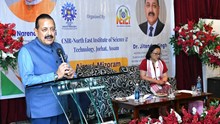
India’s agricultural landscape presents a picture of steady progress intertwined with emerging challenges. On paper, output and procurement figures remain steady; direct cash transfers continue to support millions of farmers; and flagship programs such as PM-KISAN, irrigation initiatives, and agri-tech pilots highlight ongoing government commitment.
Yet, beneath this progress lie persistent structural challenges that deserve closer attention, including imbalanced nutrient use from long-standing fertilizer policies, pressures on groundwater quality and quantity, soil health, fragmented market linkages limiting smallholder value capture, and institutional barriers slowing the spread of innovation. Addressing these issues can help ensure that today’s gains translate into sustainable growth for the future.
The following synthesis draws on government reports, institutional evaluations, and authoritative analyses, combined with field realities observed across India’s major cropping zones. It highlights concrete policy interventions for ministers, bureaucrats, and sector leaders.
1. Fertilizer Subsidies: Security Today, Ecological Debt Tomorrow
For decades, India’s fertilizer policy has been dominated by a noble goal: ensuring affordable nutrients to sustain yields and national food security. The result is massive fiscal support for fertilizers, especially urea, through direct and implicit subsidies. In FY 2024–25, the fertilizer budget rose to nearly Rs 1.91 lakh crore, and allocations under nutrient-based support increased, reflecting continued state prioritization of fertilizer affordability.
As of July 2025, the government had already disbursed Rs 49,330 crore in fertilizer subsidies for this fiscal, covering both domestic and imported urea. The Direct Benefit Transfer (DBT) in Fertilizer Scheme, which releases 100 % subsidy to companies based on verified, Aadhaar-authenticated point-of-sale transactions, remains in force, enhancing transparency but not necessarily efficiency. The government has also approved higher P and K subsidies for Kharif 2025 (phosphate subsidy up ~42%) to partially correct the nitrogen bias.
Yet, the policy has introduced deep distortions. Subsidizing nitrogenous fertilizers far more heavily than phosphorus and potassium encourages imbalanced use: farmers apply excessive urea while under-applying P and K. This weakens soil health, reduces long-term productivity, and contributes to nitrate build-up in soils and groundwater. Recent Economic Survey 2025 observations echo this, urging reforms to correct unbalanced fertilizer use and reduce environmental externalities.
Policy implications and recommendations:
-
Reform fertilizer subsidies to ensure farmers receive full value for balanced nutrient use, linking incentives with soil health cards so that those applying complete nutrient packages (NPK + secondary nutrients) gain additional support rather than losing existing benefits.
-
Scale affordable multi-nutrient blends and micronutrients through public procurement and parallel PDS channels.
-
Convert a portion of fertilizer subsidy savings into a national soil health fund for labs, mobile testing vans, and micronutrient procurement.
-
Pilot nutrient-linked subsidy reforms in ten high-risk groundwater districts with mandatory soil testing and real-time monitoring.
2. Groundwater: Quantity and Quality Both in Retreat
India remains heavily groundwater dependent; irrigation, drinking water, and rural livelihoods are bound to the aquifer. But the latest Dynamic Groundwater Resource Assessment and quality reports show worrying trends: spatially concentrated depletion and rising contamination episodes in shallow aquifers. Regions with high fertilizer and tube-well intensity show elevated nitrate and salinity levels, threatening both human health and cropping choices.
Agriculture consumes over 80 % of India’s freshwater withdrawals, and in Punjab, nearly 78 % of administrative blocks are now over-exploited. Farmers in high-input belts report falling well depths and saline infiltration during dry months. The Atal Bhujal Yojana, extended till 2025, has shown local success through community-based recharge and participatory budgeting but progress is uneven.
In Bengaluru, for instance, groundwater levels improved by 0.5–1.2 meters this year due to recharge efforts, yet the city remains in a “critical” zone due to borewell overuse.
Policy implications and recommendations:
-
Introduce locally tailored groundwater budgeting where community groups are supported to manage usage collectively, combining basin-level planning with attractive incentives for farmers adopting conjunctive use (surface water + treated wastewater), so conservation is rewarded rather than restricted.
-
Fund community aquifer recharge and decentralized monitoring systems, especially in nitrate-vulnerable zones.
-
Align agricultural credit and insurance with groundwater budgets, reward adoption of water-efficient crops and micro-irrigation only where aquifers can sustain it.
-
Integrate groundwater data with soil health and fertilizer subsidy maps for adaptive policy targeting.
3. Soil: Silent Crisis Beneath Our Fields
Healthy soil is the backbone of India’s agricultural productivity, yet decades of nutrient imbalances, monocropping, and excessive chemical inputs have weakened its vitality. Recent Soil Health Mission data (2025) show that over 60% of cultivated land is suffering from nutrient deficiencies, particularly nitrogen, phosphorus, potassium, and key micronutrients.
Degraded soils reduce crop resilience, amplify input costs, and exacerbate groundwater contamination through leaching of excess fertilizers. Regions with intensive cereal or cash-crop cultivation, such as Punjab, Haryana, and parts of Uttar Pradesh, are witnessing a worrying decline in organic carbon content, affecting soil structure, water retention, and microbial activity.
Policy implications and recommendations:
-
Promote region-specific soil health interventions, linking fertilizer and micronutrient use with soil testing data.
-
Scale up organic amendments, green manures, and conservation agriculture practices to restore soil fertility.
-
Incentivize crop rotations, cover cropping, and reduced tillage to maintain soil structure and enhance moisture retention.
-
Establish a national Soil Health Fund to support mobile testing labs, digital soil mapping, and farmer extension programs.
4. Farmer Producer Organisations: Promise, but Uneven Delivery
Farmer Producer Organizations (FPOs) are increasingly recognized as a promising institutional model to support smallholders, helping them come together to access markets, inputs, finance, and better bargaining power. NABARD and ICAR/NAARM evaluations show clear benefits where FPOs receive long-term facilitation, professional management, and buyer linkages. Yet scaling remains inconsistent, many FPOs are fragile, formed primarily to access scheme-driven grants rather than address specific value-chain gaps.
Successful FPOs share three traits: a clear commodity focus, corporate or institutional offtake partnerships, and technology-backed cold chain systems. But the majority still struggle with working capital, governance skills, and credit access.
Policy implications and recommendations:
-
Move from launch-driven targets to a performance architecture, graded, outcome-based grants (seed - growth - consolidation) tied to measurable milestones such as value handled and credit discipline.
-
Establish a national FPO Incubator Cell linking producer groups with accredited service providers for accounting, logistics, and digital marketing.
-
Introduce partial guarantee funds to de-risk buyer commitments and catalyze formal credit flow.
-
Build state-level FPO-market linkage dashboards to identify successful models and scale them horizontally.
5. Digital and Climate Adaptation: Pilots Aplenty, Scale Lackin
Digital agriculture has made visible progress, soil maps, satellite advisories, and eNAM are live, but most initiatives remain pilot-level. Many farmers still rely on informal market networks, with digital platforms often favoring traders over producers. The digital divide, limited literacy, connectivity, and local-language support, continues to blunt impact.
On the frontier, AI-based crop recommendation systems combining environmental and economic variables are emerging, offering potential to optimize input use and crop choice. However, as recent research highlights, metrics for digital success must go beyond downloads or users, real farmer income impact must be measurable.
In parallel, regenerative agriculture pilots (e.g., Bayer’s ForwardFarming and state-level natural farming missions) show yield stability with lower input intensity. Yet mainstreaming these across India’s 120+ million farms demands fiscal and institutional re-engineering.
Policy implications and recommendations:
-
Build human-centric digital extension, voice-first advisory, vernacular UIs, and field agents who translate digital signals into action.
-
Provide fiscal transition bundles (income support, insurance, technical training) for early adopters of climate-smart systems.
-
Tie public-private digital partnerships to price realization gains, not just transaction volumes.
-
Integrate digital advisories with groundwater and weather forecasting for localized decision support.
6. Markets, Storage, and Price Realisation: Leaks Along the Value Chain
India’s post-harvest system still suffers from high losses and weak price discovery. While cereal procurement is reliable in select states, for horticulture, pulses, and oilseeds, fragmented supply chains and inadequate cold storage keep farmers as price takers. Studies estimate 20–25 % post-harvest losses in perishables, a silent drain on farm income and food security.
Global fertilizer and fuel price volatility has also amplified margin pressures, demanding more resilient logistics and aggregation systems.
Recommendation highlights:
-
Build a national cold-chain dashboard integrating warehouse, mandi, and logistics data for real-time capacity management.
-
Use viability gap funding to crowd-in private investment but tie incentives to transparent, auditable farmer price clauses.
-
Strengthen graded quality standards and third-party certification labs accessible to FPOs.
-
Develop regional price-volatility indices linked to MSP and procurement decisions to improve stability.
7. Social Protection, Credit, and Insurance: The Missing Alignment
Schemes like PM-KISAN continue to disburse crores directly to farmers, cushioning consumption shocks. But credit, insurance, and direct cash transfers remain fragmented. Coverage of crop insurance remains low, with delays and moral hazard limiting farmer trust. Without aligning income support with productivity-enhancing investments, irrigation, seed, or mechanization, these programs act as relief, not reform.
Policy implications and recommendations:
-
Continue universal income support under PM-KISAN and similar schemes, while introducing additional voluntary top-ups for farmers who invest in productivity-enhancing assets such as irrigation, storage, or soil improvement, ensuring no farmer loses support, only gains more through better practices.
-
Expand index-based insurance with actuarial transparency and co-financing from buyers to reduce moral hazard.
-
Integrate credit scoring and subsidy data to target efficient, climate-resilient farm investments.
8. Data and Governance: Glue That’s Currently Missing
India’s agri-data ecosystem is rich but siloed. The Census, CGWB, soil health cards, and NITI Aayog dashboards operate independently. Nutrient subsidies are public, but rarely correlated with groundwater tables or crop productivity. The Economic Survey 2025 urges moving toward evidence-based, cross-linked datasets for real-time policy calibration.
Policy implications and recommendations:
-
Create an Integrated Agri-Monitoring Unit (IAMU), a central-state system fusing soil health, groundwater, subsidy, and market data to guide district-level allocations.
-
Run a 12-month “Agri-Data Sprint” integrating CGWB, Soil Health Mission, IMD, and procurement data into open dashboards.
-
Encourage civil society and media watchdog roles by publishing machine-readable, anonymized datasets on fertilizer use, subsidies, and crop outcomes.
Conclusion
India does not lack schemes; what it needs is surgical policy reorientation. The next five years should focus on making subsidies smarter, not larger; groundwater management non-negotiable; soil health restoration and nutrient balance a priority; FPOs market-ready; and climate-smart agronomy mainstream.
Practical first moves:
-
Pilot nutrient-linked subsidy reforms in high-risk groundwater districts, making mandatory soil testing the baseline for allocation.
-
Convert part of fertilizer savings into a National Soil Health Fund to scale soil testing, micronutrient interventions, and organic amendments.
-
Institutionalize a National FPO Support Mechanism to match FPOs with accredited service providers, guarantees, and guidance on soil- and climate-smart practices.
-
Run a national agri-data sprint integrating soil, groundwater, and procurement data into district-level dashboards for evidence-based planning.
-
Tie all digital agriculture investments to demonstrable farmer price improvements and soil/nutrient management outcomes.
-
Embed climate, water, and soil budgeting into credit and insurance programs to ensure long-term agricultural sustainability.
India’s agricultural future must be productive, inclusive, and environmentally resilient. Achieving this vision will mean repurposing subsidies into long-term investments, prioritizing soil health alongside groundwater management, and transforming governance from announcing programmes to delivering measurable progress on the ground.
The evidence is clear, and the tools are already in our hands. What India needs now is the will to act, because the real question is no longer whether the nation can afford to act, but whether it can afford to wait.
















